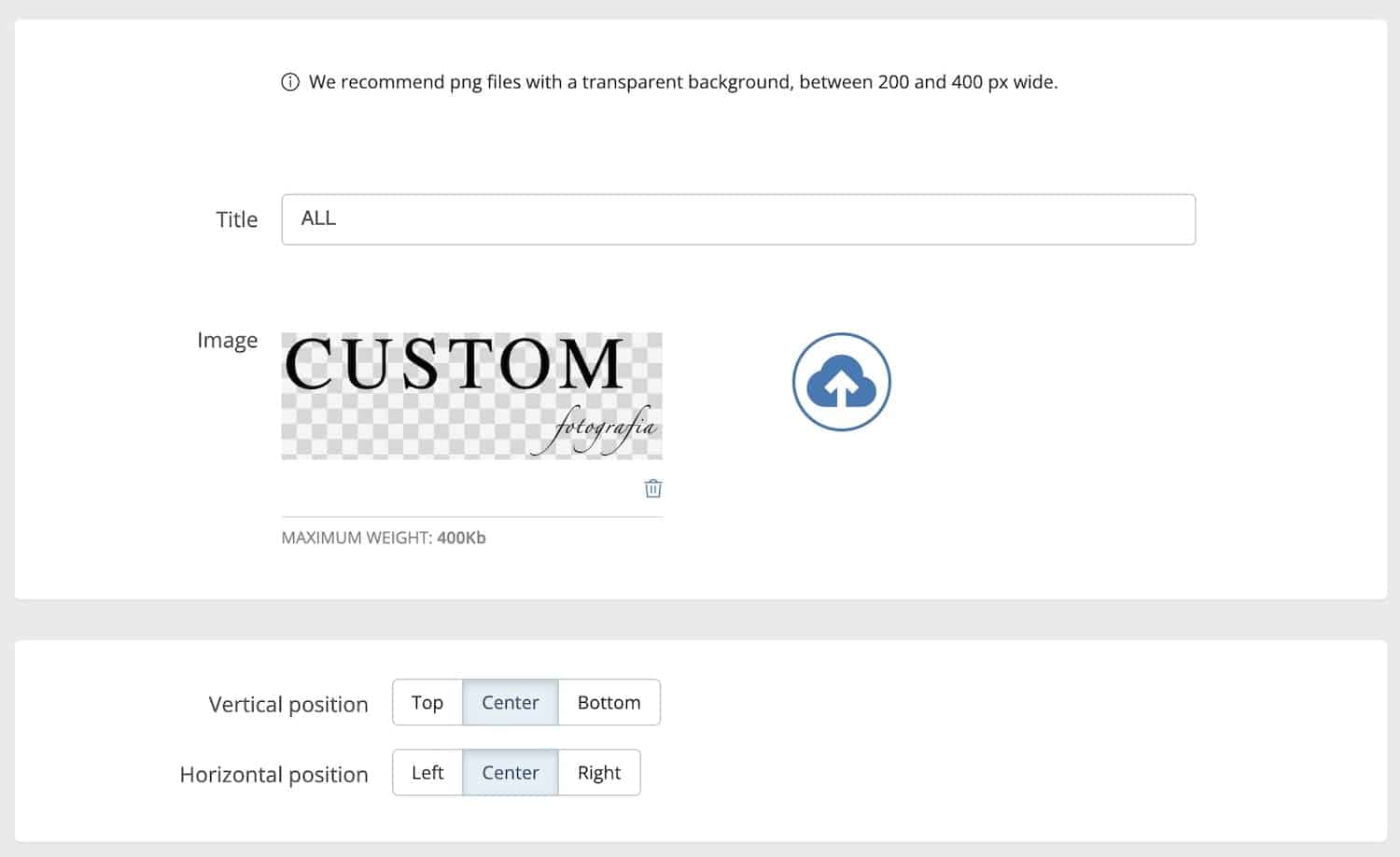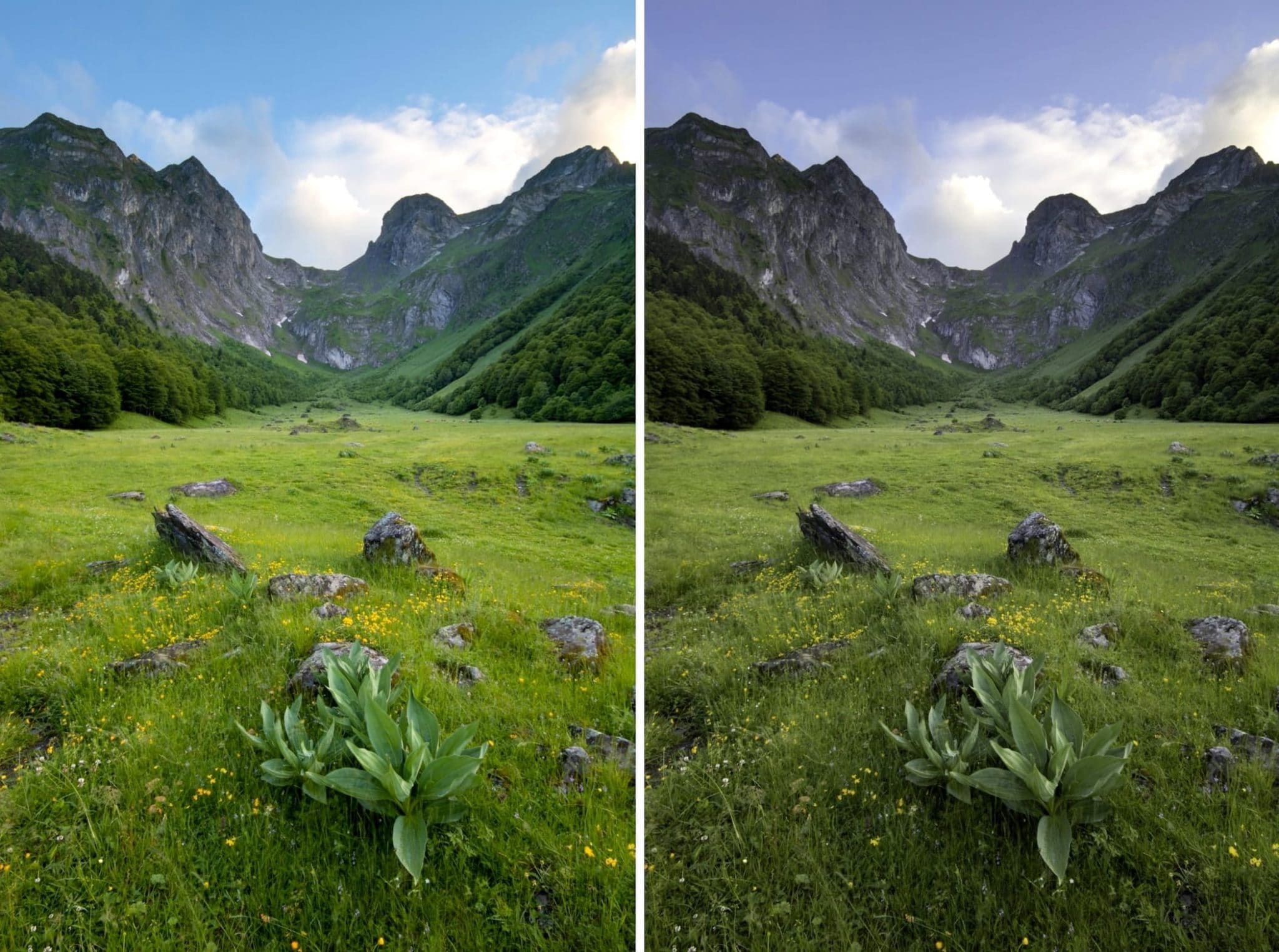A watermark is a small, usually semi-transparent image overlaid on a photograph to indicate ownership or authorship. It often includes a logo, name, or website URL and is commonly used by photographers, designers, and content creators to protect their work from unauthorized use.
Table of Contents
Pros and cons of a watermark
One of the advantages of a watermark is that it allows you to “sign” your photos, permanently associating your name or logo with them. This strengthens your brand image, complementing the effect of your logo and website domain name.

A watermark also reduces the chances of unauthorized use of your photos. And we say reduces, not prevents, as we will explain later.
In my opinion, an elegant and moderately used watermark can even enhance the aesthetic value of some photos. This is particularly true for portraits or artistic photography. Many great painters discreetly signed their works on the image itself.
However, in some cases, a watermark can be an obstacle or distraction that only tarnishes the photograph. Opinions on this topic are often quite passionate.
How secure is a watermark?
There are digital editing methods to remove a watermark from an image, but they require knowledge and time. There are also applications that can remove watermarks with varying degrees of success. In general, centrally placed and large watermarks are more effective, though they are also much more intrusive.
A common argument against watermarks is that if someone really wants to remove them, they will. This is true. However, just as an alarm system does not prevent 100% of burglaries but still effectively reduces them, the same applies to watermarks.
It’s important to consider who we are trying to prevent from copying our photos and how likely they are to use special software or spend hours editing in Photoshop. For event photos, such as guest pictures at a wedding or participants in a public race, a watermark will be sufficient protection in most cases.
When to use a watermark
Watermarks are generally used to prevent unauthorized use of images, whether online or in print. No photographer likes to have their photos stolen, but the aesthetic impact of a watermark leads many to use them only in special circumstances.
The most common case is the online sale of images. A clear example is stock photography agencies. Their entire catalog is available in low resolution with large watermarks. Once a customer purchases an image, they can download it without the watermark. This system can also be used with the photo sales and watermarking system available on Bluekea.
Another frequent use is in social photography and all types of studio sessions when clients are given private online access to photos to choose which ones they want to buy. In these cases, it is advisable to use low-resolution images, optionally with a watermark.
How to use watermarks on Bluekea
If you have a photography website with Bluekea, our photography websites platform, adding watermarks to your photos is very simple. In the Watermarks section of your control panel, you can upload one or more images to use as watermarks.

If you don’t have your website with us, you can add a watermark to your photos before uploading them to your website or social media. Most popular photo editing software, like Adobe Lightroom, includes an option to add watermarks to your photos.
The watermark manager on Bluekea
When preparing your watermark, we recommend using a 24-bit PNG format with a transparent background.
- You can store multiple watermarks.
- If you don’t upload a watermark image, your website can automatically use your logo as a watermark.
- You can choose from nine different positions for your watermark on the image.
- Watermarks can be assigned individually to each gallery, so different galleries can have different watermarks, or some galleries may have none at all.
- You can control how much of the image the watermark covers by adjusting its size relative to the photo.
Conclusion
Watermarks can be a useful tool for protecting your photos and reinforcing your brand identity. While they do not provide absolute security, they serve as a deterrent against unauthorized use. The key is to find a balance between protection and aesthetics, ensuring that the watermark enhances rather than detracts from your images. If you use Bluekea, you have flexible options to customize and manage your watermarks easily.









